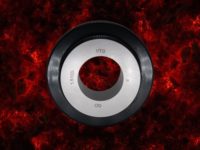In my last column I outlined the process for preparing a shipment of plug gages that are being sent to an outside laboratory for calibration. Everything that is noted in that column applies equally to ring gages, but due to their type and shape, they often require a little more attention.
A common situation with plain rings in particular is the amount of space they take up in a box, and there is an urge by some to save space and packaging and thus, the environment. This is all very commendable but steps taken to save the environment could entail losing the gages.
We often receive shipments where the outside diameter of small rings is such they will fit inside gages for larger diameters and that’s how they are sent to us. Usually there is little or no protective packing between the two rings. Regular readers know I avoid technical jargon where possible but this method of packing is referred to as “a no, no.” While you might not worry so much about the outside diameter of one ring, it can damage the ring within which it is nested due to movement in transit.
Cutting to the chase: rings have to have all surfaces protected before being put in a box. And then they should be on their flat faces in layers with packaging in between the layers in a box.
As I noted earlier, the process outlined for plug gages should be followed for ring gages, including visual inspection. However, where adjustable thread ring gages are involved there are a couple of critical steps that have to be taken before you start packaging them up for shipment.
The first thing you should establish is whether or not the seals on these gages are intact. Too often enterprising individuals break the seals and adjust the gages so the work they have produced will “pass” the gage. Obviously this is another “no, no” but it is better you know this before a calibration laboratory notes it as an “as found” condition on their report.
The most critical step in dealing with adjustable thread rings is make up a list of them with their respective pitch diameters noted and have your calibration source advise you if they have the appropriate setting plugs to suit them. If they don’t have the plugs you’ll get the rings back without calibration. Any laboratory that does this work on a regular basis will have setting plugs for standard threads and many popular semi-standard ones as well. If they don’t have them, someone will have to buy the proper setting plugs and if the thread involved is a real special, you can bet the lab won’t be interested. If you are going to make the investment, send the setting plugs to the lab with the rings.
There are a number of companies promoting gadgets and even measuring machines for the calibration of thread ring gages. But if you look at source literature for the measuring machines, you’ll usually find they always illustrate that function for solid, non-adjustable rings. An internal caliper type instrument does not become a device suitable for calibrating thread rings just by adding ball contacts to it. But there are some labs who think it does.
U.S. standards for these gages are quite clear in recommending they be set using setting plug gages designed for the purpose. This, by its nature, becomes a functional calibration that includes any variations in linear pitch, thread form, and pitch diameter size. Any other method checks simple pitch diameter only—if you’re lucky. The chances of the results being the same are: zilch. (Sorry about slipping techno-jargon in there.)
It’s an apples versus oranges situation irrespective of how many millionths of an inch the measuring devices can be read to. If your calibration source is going to use direct measurements to qualify your adjustable thread rings, find out how they will measure and compensate for variations in pitch, form and roundness in arriving at a functional setting size. I think you’ll find that questions in this regard will result in pauses in the conversation because folks who do this sort of thing often do so because their knowledge of the metrology involved is a bit lacking.
Once you’ve sorted out the gages, the rest of it is up to good packaging to ensure your gages arrive at your calibration source without damage. And hopefully, they will be returned the same way.


